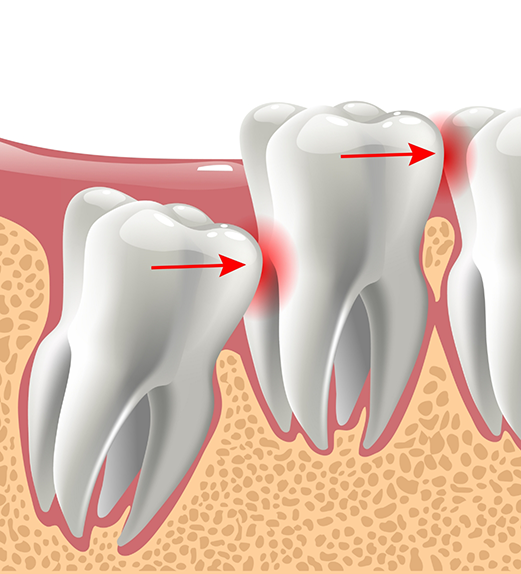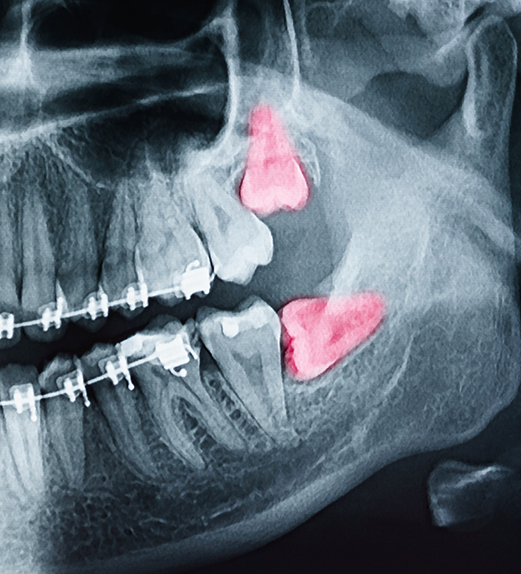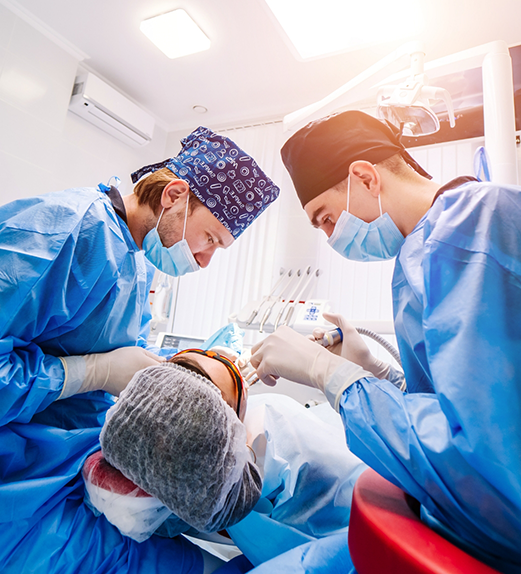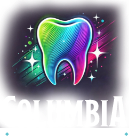Wisdom Tooth Extractions Dallas
Helping You Say Goodbye to Unnecessary Wisdom Teeth
Tooth damage and jaw pain are two of the most common issues associated with the arrival of the third molars. Also known as wisdom teeth, they tend to erupt between the ages of 16 and 25. While some experience no issues, most need help to remove them because of issues related to pain, swelling, or infection. At Columbia Dental & Orthodontics, we can remedy the situation with a comfort-based approach and dental team that will help you say goodbye to these problem-causing teeth. Call us today to schedule your appointment.
Why Choose Columbia Dental & Orthodontics for Wisdom Tooth Extractions?
- Advanced Dental Procedures Performed Under One Roof
- Dentist Emphasizes Comfort, Safety & Convenience
- Compassionate and Patient-Focused Dental Team
What are Wisdom Teeth?

Wisdom teeth are the third set of molars that erupt during late adolescence or early adulthood. Once used by early humans to eat dense foods that required tearing and gnawing to consume, they no longer serve a purpose since diets and facial structures have drastically changed. They now tend to cause problems because there is less space available for them to erupt successfully, which can lead to impaction or partial eruption.
Do Wisdom Teeth HAVE To Be Removed?

No, wisdom teeth do not always have to be removed. Some patients experience no problems when their teeth decide to erupt; however, most people require extraction because issues occur that result in significant pain, inflammation, infection, or overcrowding. By removing these teeth, patients can enjoy better long-term oral health.
The Wisdom Tooth Process

After Dr. Nadella decides that wisdom tooth extraction is the appropriate solution, he will begin by administering local anesthesia to numb the various areas of your mouth. Once you are comfortable, he will begin to extract each wisdom tooth using the correct method. If the tooth is partially visible above the gumline, he will use dental instruments to grasp the tooth, elevate it, and gently move it back and forth until it detaches from the ligaments that exist underneath.
If the tooth is impacted, a more surgical approach will be required. He will make a small incision in the gums and expose the underlying tooth. To reduce the amount of impact it has on the bone, he may decide to cut the tooth into sections for easier removal.





